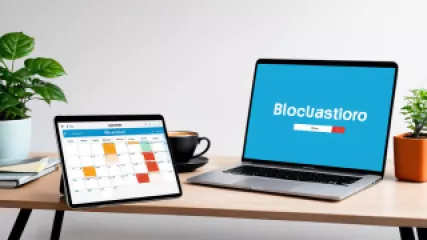10 Proven Steps to Overcome Online Procrastination
10 Proven Steps to Overcome Online Procrastination
Struggling with online procrastination and feeling overwhelmed by the constant temptation of distractions? You're not alone. In today's digital age, where we're constantly bombarded with notifications, social media updates, and endless entertainment options, it's no wonder that many of us find it challenging to stay focused and productive. But fear not – with the right strategies and a little bit of discipline, you can conquer online procrastination and regain control of your time.
In this comprehensive guide, we'll walk you through 10 proven steps to help you overcome online procrastination and boost your productivity. Whether you're a student, a remote worker, or simply someone who wants to make the most of their time, these techniques will help you stay on track and achieve your goals.
Step 1: Identify Your Procrastination Triggers
The first step in overcoming online procrastination is to understand what's causing it in the first place. Take some time to reflect on when and why you find yourself procrastinating. Are you more prone to it during certain times of the day, or when you're faced with specific tasks? Identifying your procrastination triggers is crucial, as it will help you develop targeted strategies to address them.
For example, you might notice that you tend to procrastinate more when you're feeling overwhelmed or when you're working on tasks that you find boring or difficult. By understanding these triggers, you can then implement specific techniques to prevent them from derailing your productivity.
Step 2: Eliminate Distractions
One of the biggest culprits behind online procrastination is the constant barrage of digital distractions. From social media notifications to the temptation to browse the web aimlessly, these interruptions can quickly derail your focus and productivity.
To combat this, take steps to eliminate or minimize distractions. This might include:
- Turning off notifications on your devices
- Closing unnecessary browser tabs and applications
- Using website blockers or productivity apps to restrict access to time-wasting websites
- Creating a dedicated workspace that is free from visual and auditory distractions
By creating a distraction-free environment, you'll be better equipped to stay on task and resist the urge to procrastinate.
Step 3: Prioritize Your Tasks
Another common reason for online procrastination is feeling overwhelmed by the sheer number of tasks on your plate. When you're faced with a long to-do list, it can be tempting to put off the most challenging or unpleasant items in favor of easier, more enjoyable tasks.
To combat this, prioritize your tasks using a system like the Eisenhower Matrix or the Pomodoro Technique. This will help you focus on the most important and urgent tasks first, rather than getting sidetracked by less critical items.
Additionally, break down larger tasks into smaller, more manageable steps. This will make them feel less daunting and make it easier to start and complete them.
Step 4: Implement the 2-Minute Rule
One of the most effective strategies for overcoming procrastination is the 2-Minute Rule. The premise is simple: if a task or activity can be completed in 2 minutes or less, do it immediately instead of putting it off.
This approach helps to overcome the initial inertia of starting a task, which is often the biggest hurdle. By getting started right away, you're more likely to build momentum and follow through on the task. Over time, this habit can help you develop a more proactive and disciplined approach to your work.
Step 5: Embrace the Pomodoro Technique
The Pomodoro Technique is a time management method that can be particularly effective in combating online procrastination. The premise is simple: you work in 25-minute intervals (called "Pomodoros"), followed by a short break. This helps you stay focused and engaged, while also providing regular breaks to recharge and avoid burnout.
To implement the Pomodoro Technique, set a timer for 25 minutes and work without interruption. When the timer goes off, take a 5-minute break. Repeat this cycle several times, taking a longer break (15-30 minutes) after every 4 Pomodoros.
The Pomodoro Technique can be especially helpful for tasks that you find particularly challenging or unpleasant, as the short bursts of focused work can make them feel more manageable.
Step 6: Develop a Rewards System
Humans are naturally motivated by rewards, and creating a rewards system can be a powerful tool in overcoming online procrastination. After completing a difficult task or reaching a milestone, treat yourself to something you enjoy, whether it's a short break, a healthy snack, or a small indulgence.
By associating the completion of tasks with positive reinforcement, you'll be more likely to stay motivated and continue pushing forward, even when the work feels challenging.
Step 7: Practice Time Blocking
Time blocking is a productivity technique that involves dividing your day into specific time slots, each dedicated to a particular task or activity. This approach can be particularly effective in combating online procrastination, as it helps you maintain a clear focus and avoid getting sidetracked by distractions.
To implement time blocking, start by identifying your most important tasks and allocating dedicated time slots for each one. During these time blocks, avoid the temptation to switch tasks or check your phone, and instead, fully immerse yourself in the work at hand.
Step 8: Take Regular Breaks
While it's important to stay focused and productive, it's equally crucial to take regular breaks to recharge and avoid burnout. Prolonged periods of intense focus can actually decrease your overall productivity, as they can lead to mental fatigue and decreased cognitive function.
Make sure to take short breaks every 90 minutes or so, even if it's just a quick walk around the block or a few minutes of stretching. Additionally, try to take longer breaks, such as a lunch break or a weekend, to give your mind a chance to rest and rejuvenate.
Step 9: Embrace the "Eat That Frog" Approach
The "Eat That Frog" approach, inspired by the book of the same name by Brian Tracy, is a powerful technique for overcoming online procrastination. The premise is simple: tackle your most difficult or unpleasant task first thing in the morning, when your willpower and energy levels are at their highest.
By "eating the frog" (i.e., completing the dreaded task) early in the day, you'll not only get it out of the way, but you'll also experience a sense of accomplishment that can carry you through the rest of your day. This approach can be particularly effective for tasks that you tend to procrastinate on the most.
Step 10: Seek Support and Accountability
Finally, don't be afraid to seek support and accountability in your journey to overcome online procrastination. Whether it's enlisting the help of a productivity coach, joining an online community of like-minded individuals, or simply sharing your goals with a trusted friend or family member, having external support can make a significant difference in your success.
Accountability partners can help you stay on track, provide encouragement and motivation, and offer valuable insights and strategies. Additionally, consider using productivity apps or tools that can help you track your progress and stay accountable to your goals.
Conclusion
Overcoming online procrastination is a journey, not a destination. It requires a combination of self-awareness, discipline, and the right strategies. By implementing the 10 steps outlined in this guide, you'll be well on your way to regaining control of your time, boosting your productivity, and achieving your goals.
Remember, the key is to start small and be patient with yourself. Rome wasn't built in a day, and overcoming procrastination is no different. With consistent effort and a willingness to experiment, you'll develop the habits and mindset necessary to conquer online distractions and unlock your full potential.
So what are you waiting for? Take the first step today and say goodbye to online procrastination for good.






